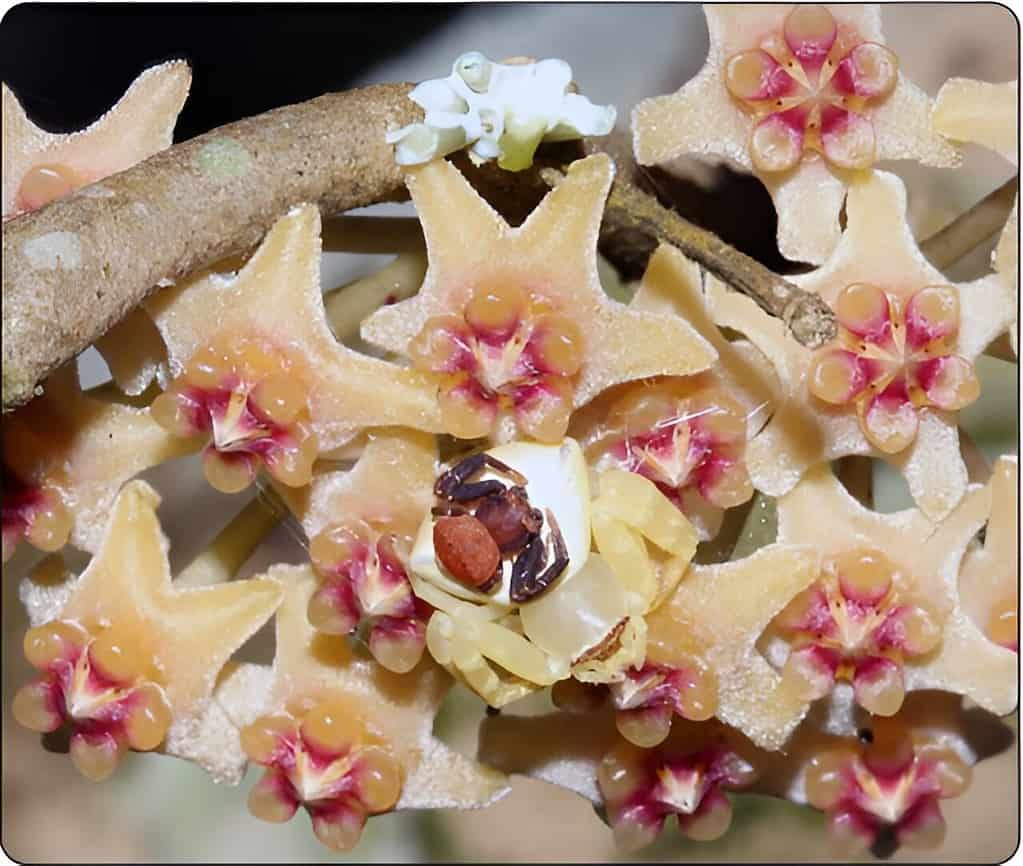Camouflage in the natural world is nothing new. Many types of creatures hide thesemves in nature, both to capture prey and to escape their own predators — but the way these spiders do it is something else. The male and the female crab spider work together to create the illusion, one blending in with the flower’s petals while the other mimics its pistil and stamens.

The spiders that were a flower
Shi-Mao Wu and Jiang-Yun Gao, two researchers from the Yunnan University in China, were exploring a rainforest in the Yunnan region of China when they came across something that looked suspicious.
It was a pair of crab spiders, but they weren’t doing classical spider things. Upon closer inspection, the researchers realized that they were seeing two spiders cooperating to resemble a single flower.
The researchers didn’t think all that much about it initially, just took a photo and moved on. But when they returned four days later, the two spiders were still there, doing the same thing.
The behavior came as a big surprise. Female crab spiders were known to engage in camouflage, but something like this was never observed before.
“Female crab spiders (Thomisus spp) are able to camouflage themselves as flowers not only to successfully avoid being preyed upon by birds but also to ambush flower-visiting insect prey. This mimicry manipulates flower signals and may vary from species to species. However, do male crab spiders, which are usually much smaller in size and darker in coloration than females, also camouflage themselves in this way?” the researchers ask.
A first in the animal world
Cooperative mimicry has never before been observed — not just in spiders, but in any species. It’s not hard to see why: this approach requires both participants to work together in creating a convincing camouflage. It’s an evolutionary and cooperative challenge.
This is all the more striking in spiders. Crab spiders are diverse group of over 2,000 species — but most of them spend most of their time alone, coming together briefly only to reproduce. This usually means a few minutes or an hour or two. Four days together, in a similar position, can’t be explained by coming to reproduce. That’s why researchers suspect a case of advanced mimicry.
The mimicry only works if both are present, too. The female mimics the lighter background (petals) while the redder male mimics the pistil and stamens, the reproductive glands of the flower.
However, reproduction may still be the driver behind this behavior.
Crab spiders don’t spin webs. They’re ambush predators, hiding and waiting for unsuspecting prey to come nearby. Some species sit on or beside flowers, where they snatch insects that come around. The lighter colored females blend in with flower petals. For the darker males, coming close to the females would be a hazard if they don’t also blend it. As a result, males that look more like flowers may have had an evolutionary advantage.
However, this is all still a fair bit of speculation. For now, researchers recommend closer studies of crab spiders to see if more evidence can be found of this type of behavior.
“This could be an example of “cooperation” that expands the niche of both females and males in mimicry systems, and cooperating individuals may have improved survivorship and predation efficiency. It would also be interesting to investigate the co-evolution between male and female crab spiders,” the researchers conclude.
Shi‐Mao Wu et al, Male and female crab spiders “cooperate” to mimic a flower, Frontiers in Ecology and the Environment (2024). DOI: 10.1002/fee.2721









